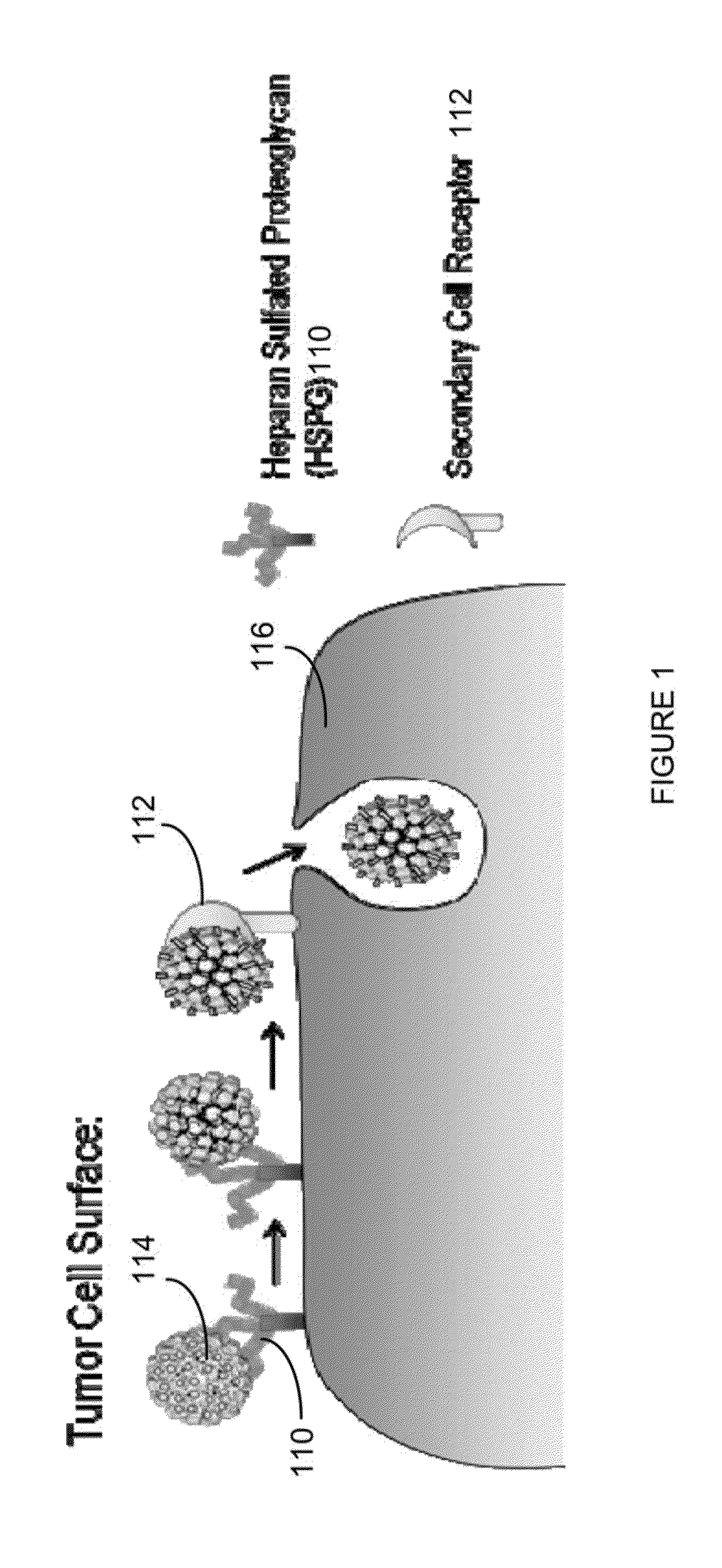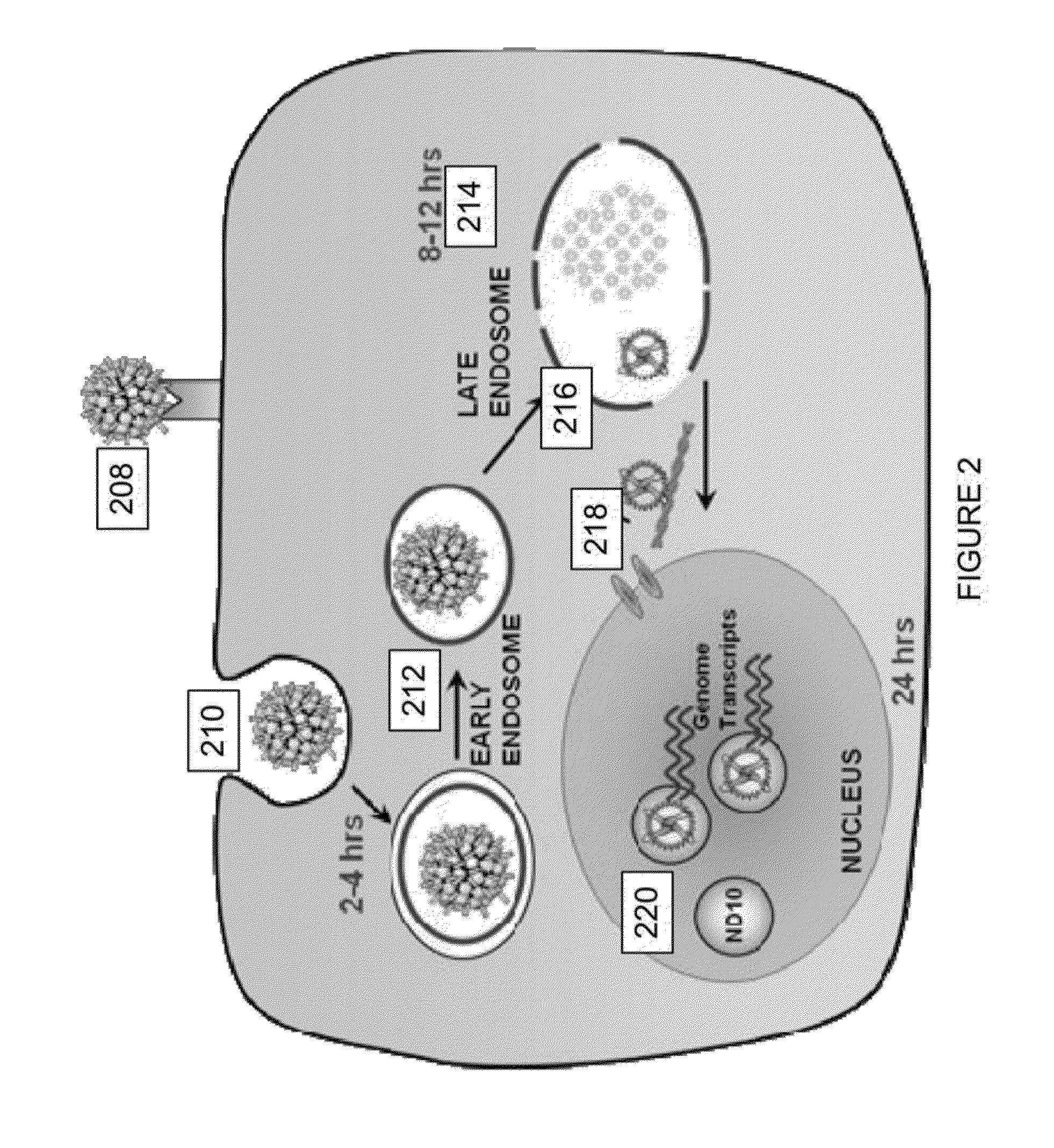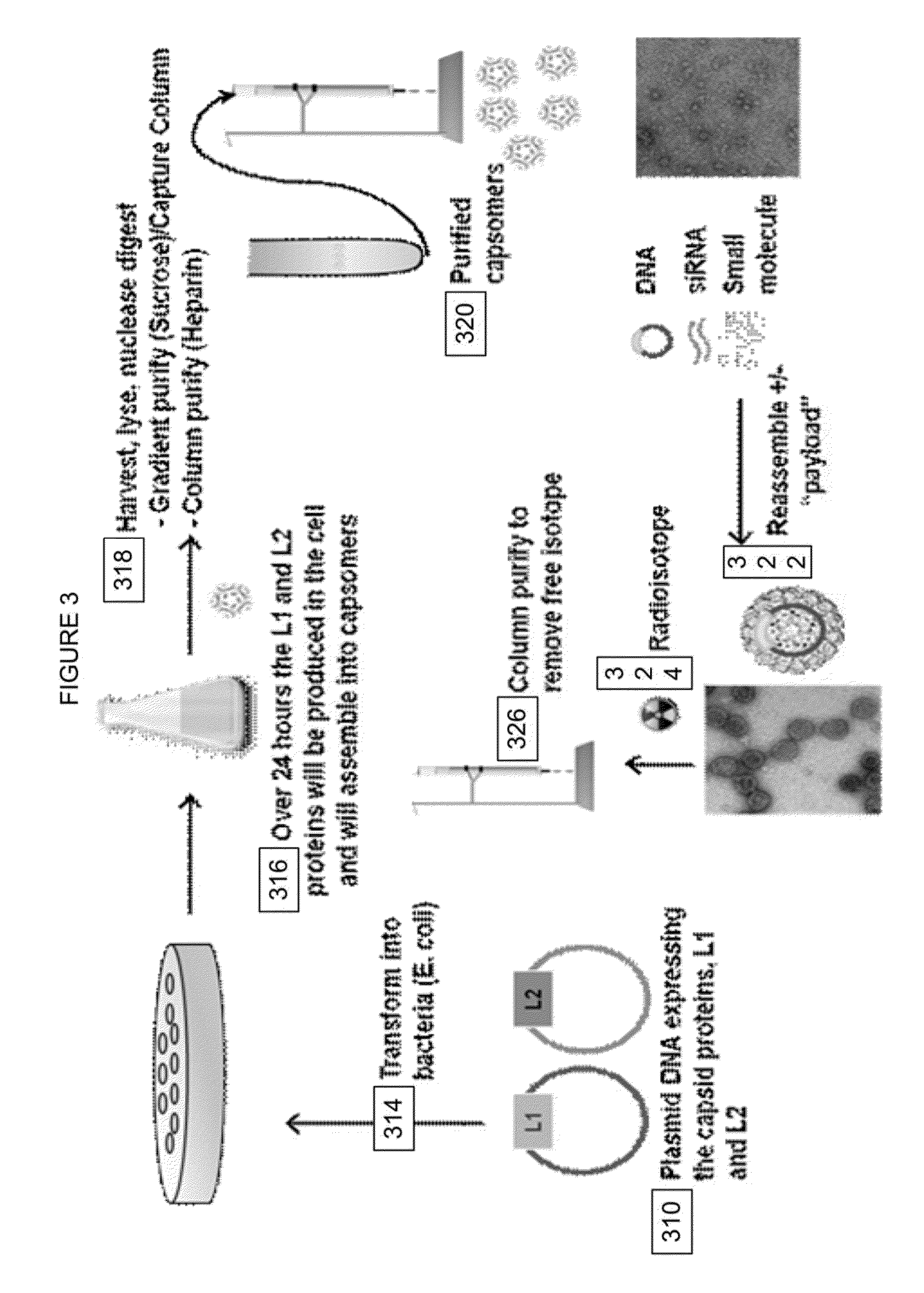Virion Derived Protein Nanoparticles For Delivering Radioisotopes For The Diagnosis And Treatment Of Malignant And Systemic Disease And The Monitoring Of Therapy
a technology of radioisotopes and nanoparticles, which is applied in the direction of peptide/protein ingredients, drug compositions, genetic material ingredients, etc., can solve the problems of inability to provide specific cell treatment and image, limited current treatment methods using radioisotopes, and inability to provide treatment and image, etc., to achieve enhanced radiation effect of cell dna, precise delivery, and improved imaging differentiation
- Summary
- Abstract
- Description
- Claims
- Application Information
AI Technical Summary
Benefits of technology
Problems solved by technology
Method used
Image
Examples
example 1
Expression of L1 and L2 Capsid Proteins in a Bacterial Host Cell System
[0068]Aliquot 50 mL of Culture Medium, 50 μL of 50 mg / mL Kanamycin solution, and 50 of 100 mg / mL Ampicillin solution into a sterile disposable shake flask.
[0069]Place the shake flask and the glycerol stock vial E. coli BL21(DE3)-pET24-L1 / pBAD-L2 in BCS, do not thaw the vial.
[0070]Inoculate the shake flask from the Intermediate Glycerol Stock vial: use a sterile 1-mL pipet to remove approximately 10 μL of frozen glycerol stock from the cryo-vial (avoid thawing) and immerse the tip of the pipette into the seed medium and stir briefly to inoculate.
[0071]Place the shake flask into the incubator shaker set at 30° C., 250 rpm and incubate overnight.
[0072]Measure the OD600 of the overnight seed culture.
[0073]Aliquot 1 mL of 100 mg / mL Ampicillin solution and 1 mL of 50 mg / mL Kanamycin solution into each of the IL of culture medium in 2.8 L shake flasks.
[0074]Inoculate the shake flasks to an OD600 of ˜0.1 with the appropr...
example 2
Purification of VLPs by Sucrose Gradient Centrifugation
[0078]Preparation of 10-65% Linear Sucrose Gradient
[0079]Make a stock solution of 65% sucrose by dissolving 32.5 g of crystalline sucrose (Fisher cat. #57-50-1) to a final volume of 50 ml sample buffer. Sample buffer used for VLP purification is 0.5M NaCl (American Bioanalytical cat. #AB01915) in sterile 1×PBS (Boston BioProducts cat. #BM 220S).
[0080]Make different concentrations of sucrose solution as described in Table 1 by mixing appropriate volumes of 65% sucrose stock solution (Step 1) in sample buffer.
TABLE 1Finalml 65%mlsucrose %stockbuffer507.692.31406.153.85304.625.38203.086.92101.548.46
[0081]Gently overlay decreasing concentrations of sucrose (highest concentration at the bottom) in a Beckman Polyallomer centrifuge tube (Cat. #326819). The volumes of different sucrose concentrations in the tube are as follows: 0.5 ml at 65%, 0.5 ml at 50%, 0.75 ml at 40%, 0.75 ml at 30%, 0.75 ml at 20% and 0.75 ml-1 ml at 10%.
[0082]Kee...
example 3
Purification of VLPs Using Heparin HiTrap Column
[0085]After first centrifugation, if the homogenate is still turbid—re-centrifuged at 15,000 g for 30 min
[0086]Recover clarified homogenate from and store at −80° C. until use.
[0087]Add 0.01% Tween 80 to clarified homogenate.
[0088]Dialyze into PBS supplemented to 0.25 M NaCl, 2 mM DTT, 0.01% Tween 80, pH 7.4—overnight at 4° C. with three changes of buffer.
[0089]Equilibrate 1-mL HiTrap Heparin HP with 10 column volumes (CV) of dialysis buffer
[0090]Load entire volume of dialysed homogenate onto Heparin column at ˜0.1 mL / min
[0091]After loading, chase sample with ˜2 CV of dialysis buffer
[0092]Elute column with step gradient of increasing NaCl concentration—all steps contain PBS plus 1 mM DTT, 0.01% Tween 80-2.5 CV of each step: 0.4, 0.6, 0.8, 1.0 & 1.5 M NaCl
[0093]Collect 1.0 mL fractions of flow-through from loading and 0.5-mL fractions during elution
[0094]Determined absorbance of fractions at 260, 280 & 340 nm
[0095]Analyze load flow-thro...
PUM
| Property | Measurement | Unit |
|---|---|---|
| volume | aaaaa | aaaaa |
| volume | aaaaa | aaaaa |
| bed volume | aaaaa | aaaaa |
Abstract
Description
Claims
Application Information
 Login to View More
Login to View More - R&D
- Intellectual Property
- Life Sciences
- Materials
- Tech Scout
- Unparalleled Data Quality
- Higher Quality Content
- 60% Fewer Hallucinations
Browse by: Latest US Patents, China's latest patents, Technical Efficacy Thesaurus, Application Domain, Technology Topic, Popular Technical Reports.
© 2025 PatSnap. All rights reserved.Legal|Privacy policy|Modern Slavery Act Transparency Statement|Sitemap|About US| Contact US: help@patsnap.com



